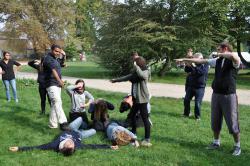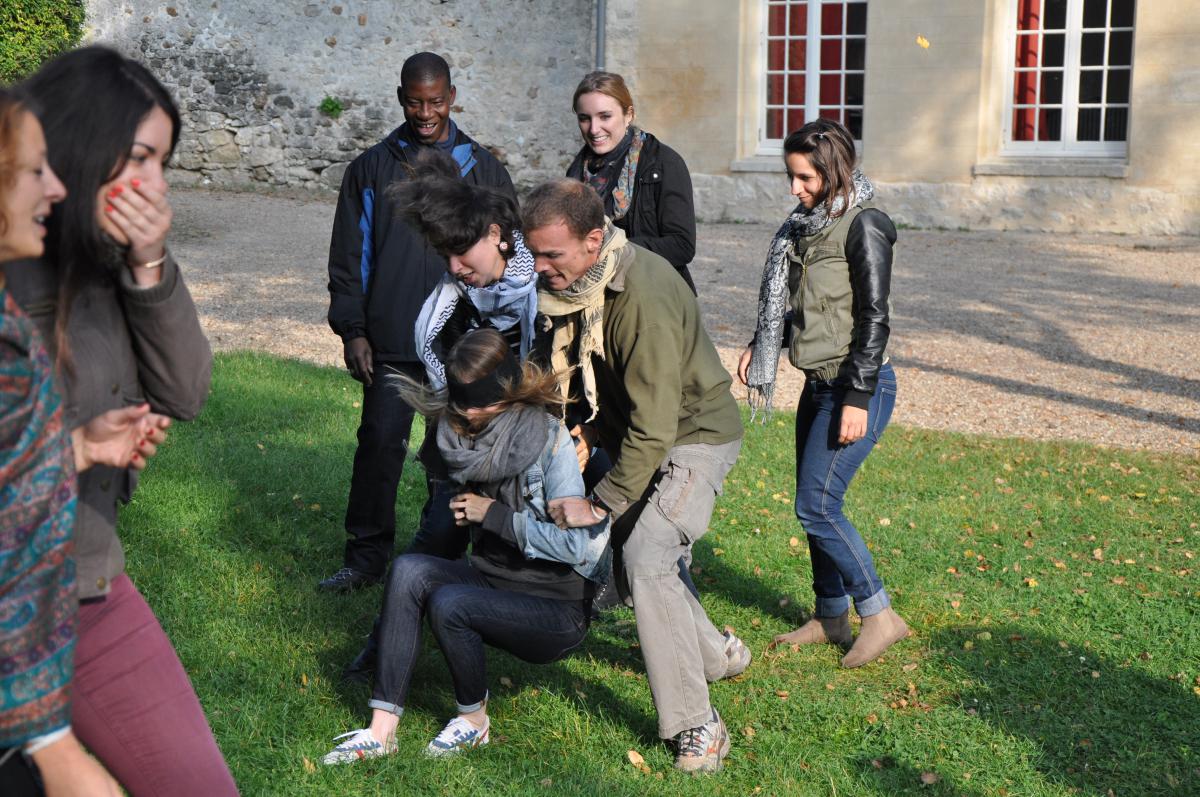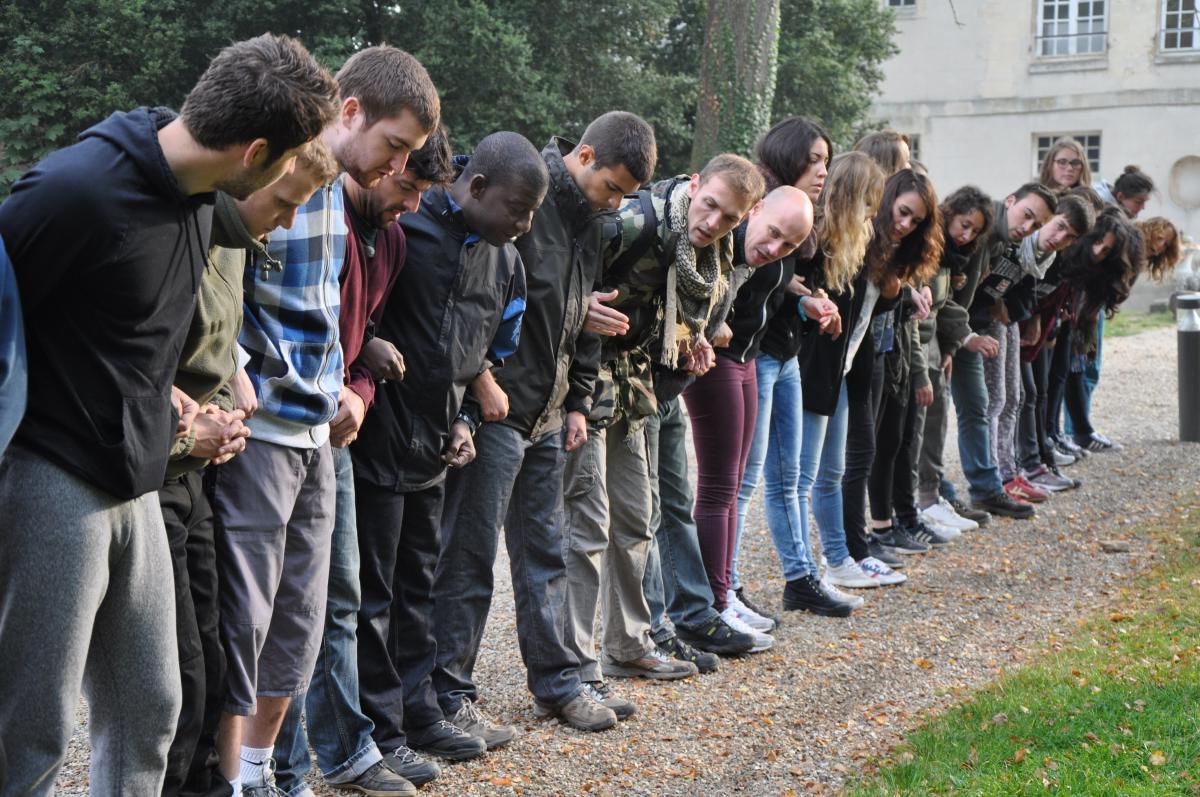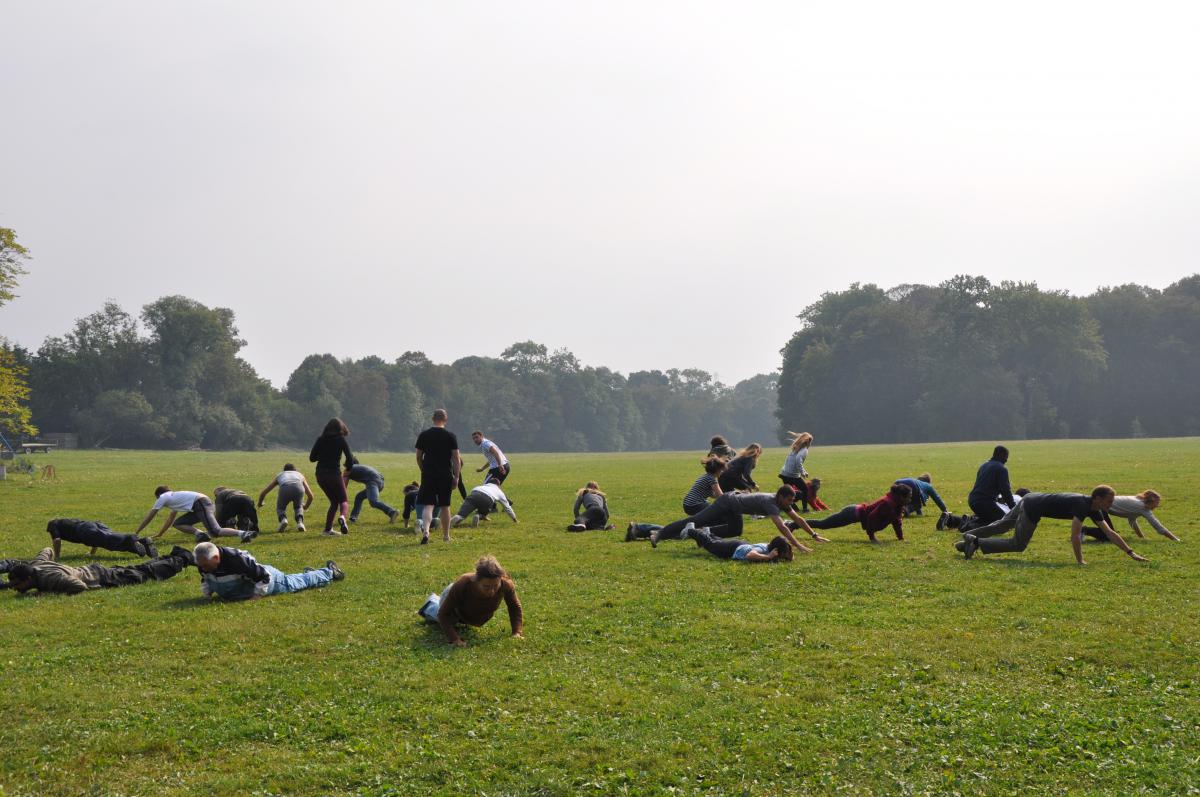Under attack: simulation turns theory into reality

(Published Dec. 11, 2014)
This was the basic information given to the 30 students before they stepped out of their comfortable air-conditioned coach. Of course, they did not know that this lovely peaceful place was about to become an extremely violent and dangerous armed conflict area- ruled by unidentified militias. The students are all part of the Geopolitics and International Security masters degree from the Catholic University of Paris. This will be their first week together. Their masters director, Dr. Jean-Jacques Patry, wanted them to have an introduction to the concept of unarmed civilian peacekeeping (UCP) or how unarmed civilians could intervene in conflict zones. As of today, this is a concept almost unknown in France, as is the reality of the work done by some non-governmental organizations (NGO) in this domain. The training is organized by the Comité ICP with the participation of Peace Brigade International (PBI), Mouvement pour une Alternative non-violente (MAN) and Nonviolent Peaceforce (NP).

As with most of the workshops, the week started with a welcoming session immediately followed by icebreaking sessions. The aim of this was so people could be mixed together based on: their living and working experience in armed conflict areas, knowledge of non-violent methods and age. It is interesting to see how different levels of previous experience creates a lot of diversity and enriches discussions. After a short break during which the group discovered their rooms, (who hasn’t dreamed of sleeping in a castle with a standing view of the garden?), the second session introduced the participants to unarmed civilian peacekeeping, its key concepts and the key actors. Those who expected a calm evening were quickly grounded in reality when armed actors stormed the room.

Day 3 started with a session on resolution of conflict in multi-cultural teams. This was followed by a session going over all the basic trainings on field security. By the end, no one piece of clothing was saved from grass stains; as participants had to flatten down on the grass as fast as they could, in reacting to a grenade attack. Security is a major point for anyone working in the field. Not only for our own safety; but so we can also effectively protect our partners and beneficiaries. In the afternoon, teams were formed for the “quick decisions review” session, each based on true situations experienced by NP teams in the field. In the evening, the teams received a briefing package containing several pieces of information for their next day’s mission: it entailed conducting an exploration in Anapo (fictive name) to see if NP could open a new mission there. Teams had the night to prepare themselves for a long and stressful day of meetings, travelling, negotiations, reporting and constant analysis of the situation.
Strangely, Thursday’s breakfast seemed to be quickly finished up. From the discussion, I understand some teams worked late on preparing their mission… And the last briefing slightly increased their level of stress as new events arose. Throughout the day, in addition to developing trust and acceptance from critical actors in the conflict context, each team’s objectives are four-fold:
- Conduct NP’s first on-the-ground analysis of the conflict context in East Sakwa (fictive name)
- Assess the human rights situation in the region
- Analyse the security situation for potential NP operations
- Develop a recommendation for what role NP could play in East Sakwa.

The end of the simulation also marks the end of the day. After four intensive days, everyone is welcoming tonight trapper’s meal gently prepared by the scouts. Tomorrow, everyone will be leaving this place. Leaving “our” castle and the surrounding nature for a university amphitheater in Paris… and hopefully, no more grenade attacks! But sitting around the huge fire, no one really seems to be thinking about that yet.
By Simon Meynsbrughen, Nonviolent Peaceforce Communications Coordinator
